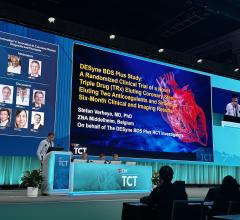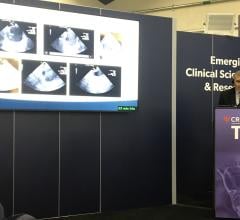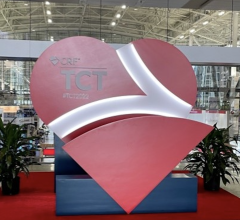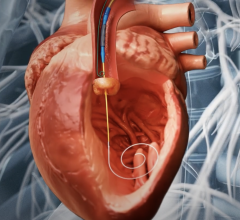
October 26, 2017 — The National Institutes of Health has awarded Detroit cardiologist Adam Greenbaum, M.D., for his pioneering work on the novel transcaval heart procedure.
Greenbaum, co-director of the Henry Ford Center for Structural Heart Disease, has received the prestigious 2017 Orloff Award from the NIH’s National Heart, Lung and Blood Institute. The NIH announced that Greenbaum and NIH Cardiovascular Intervention Program Senior Investigator Robert J. Lederman, M.D., were awarded for pioneering and proving the effectiveness of the transcaval procedure.
The unique procedure accesses the heart by temporarily connecting major blood vessels in the patient’s abdomen. The recognition comes as a 76-year-old metro Detroit man became the 100th patient to undergo the procedure at Henry Ford Hospital on May 11, 2017. Greenbaum performed the first human transcaval procedure in the world on July 3, 2013.
“The success of the 100th transcaval procedure at Henry Ford is truly gratifying, and the Orloff Award acknowledges the importance of our work,” said Greenbaum, who has spent years working with Lederman on new ways of accessing the heart. “The transcaval procedure provides an option for those patients who thought they had none – and for those doctors treating them.”
The Orloff Award recognizes outstanding achievements in science and the development of novel research tools in the previous year by NIH researchers and those working with them. The Orloff Science Awards are named in honor of Dr. Jack Orloff, a longtime member of the NHLBI intramural family and scientific director from 1974-1988.
A study published in November in the Journal of the American College of Cardiology showed the novel way to access the heart for transcatheter valve replacement has a 98 percent success rate.
“There were some doubters, so the reason we did this prospective trial was to prove that it could be done safely,” Greenbaum said.
Lederman developed the transcaval technique in a research setting at the NIH. He came to Henry Ford in July 2013 to observe the initial procedure and share his insights.
Since then, the procedure has been performed when the patients were either too sick for traditional open-heart surgery, or their anatomy – like small arteries — prevented the use of more traditional routes to the heart using a catheter.
The 100th patient, Hugh Lesner, had plaque build-up that made accessing his heart difficult through the traditional route. Lesner, a former union president and mill operator who retired from Great Lakes Steel after 36 ½ years, was out of the hospital the next day.
During transcaval valve replacement, a wire is guided into a leg and up through the femoral vein. An opening between the vein and artery is widened to the point of allowing a catheter to connect them, continue to the heart, and implant the new artificial aortic heart valve.
As the catheter is removed, a plug is inserted in the artery to close the hole made for the temporary connection of the two major blood vessels. Greenbaum and the Center for Structural Heart Disease team at Henry Ford Hospital are the most experienced team performing the procedure in the United States.
William O’Neill, M.D., medical director of Henry Ford’s Center for Structural Heart Disease, says the procedure could help more than 10,000 patients annually.
“The milestone brings a message of hope for other potential patients in Michigan and across the country,” said O’Neill.
For more information: www.henryfordhospital.com/structuralheart
Related Transcaval TAVR Content:
VIDEO: Transcaval Access in TAVR Procedures — Interview with Adam Greenbaum, M.D.
How to Perform Transcaval TAVR Access
VIDEO: Walk Through of the Henry Ford Hospital Structural Heart Cath Lab
Study Deems Transcaval Valve Replacement Pioneered at Henry Ford Hospital Successful
First Transcaval Aortic Valve Replacement Performed in Europe
Additional articles and videos on Henry Ford Hospital
Find more structural heart technology content


 November 09, 2023
November 09, 2023 








